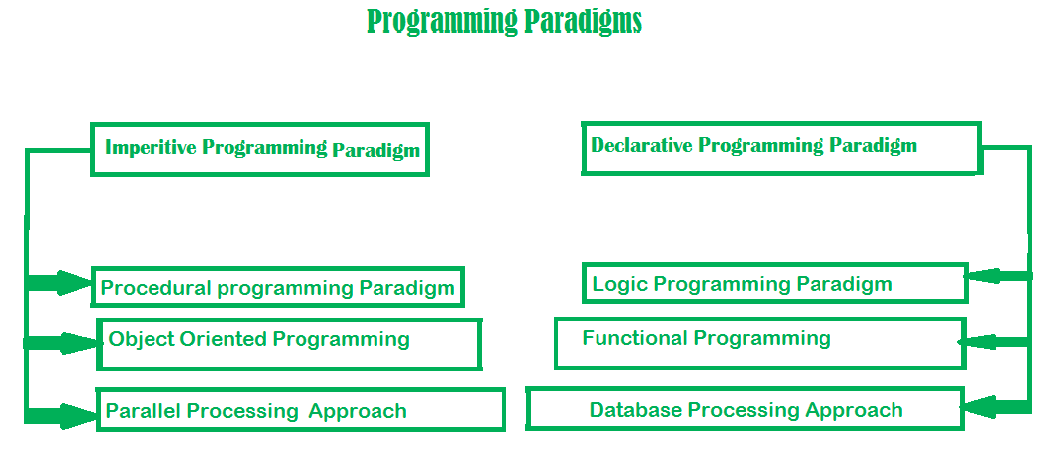Programming Paradigms in Python
Last Updated :
21 Apr, 2020
Paradigm can also be termed as a method to solve some problems or do some tasks. A programming paradigm is an approach to solve the problem using some programming language or also we can say it is a method to solve a problem using tools and techniques that are available to us following some approach. There are lots of programming languages that are known but all of them need to follow some strategy when they are implemented and this methodology/strategy is paradigms. Apart from varieties of programming languages, there are lots of paradigms to fulfill each and every demand.

Python supports three types of Programming paradigms
-
Object Oriented programming paradigms
-
Procedure Oriented programming paradigms
-
Functional programming paradigms
Object Oriented programming paradigms
In the object-oriented programming paradigm, objects are the key element of paradigms. Objects can simply be defined as the instance of a class that contains both data members and the method functions. Moreover, the object-oriented style relates data members and methods functions that support encapsulation and with the help of the concept of an inheritance, the code can be easily reusable but the major disadvantage of object-oriented programming paradigm is that if the code is not written properly then the program becomes a monster.
Advantages
- Relation with Real world entities
- Code reusability
- Abstraction or data hiding
Disadvantages
- Data protection
- Not suitable for all types of problems
- Slow Speed
Example:
class Emp:
def __init__(self, name, age):
self.name = name
self.age = age
def info(self):
print("Hello, % s. You are % s old." % (self.name, self.age))
Emps = [Emp("John", 43),
Emp("Hilbert", 16),
Emp("Alice", 30)]
for emp in Emps:
emp.info()
|
Output:
Hello, John. You are 43 old.
Hello, Hilbert. You are 16 old.
Hello, Alice. You are 30 old.
Note: For more information, refer to Object Oriented Programming in Python
Procedural programming paradigms
In Procedure Oriented programming paradigms, series of computational steps are divided modules which means that the code is grouped in functions and the code is serially executed step by step so basically, it combines the serial code to instruct a computer with each step to perform a certain task. This paradigm helps in the modularity of code and modularization is usually done by the functional implementation. This programming paradigm helps in an easy organization related items without difficulty and so each file acts as a container.
Advantages
- General-purpose programming
- Code reusability
- Portable source code
Disadvantages
- Data protection
- Not suitable for real-world objects
- Harder to write
Example:
mylist = [10, 20, 30, 40]
def sum_the_list(mylist):
res = 0
for val in mylist:
res += val
return res
print(sum_the_list(mylist))
|
Output:
100
Functional programming paradigms
Functional programming paradigms is a paradigm in which everything is bind in pure mathematical functions style. It is known as declarative paradigms because it uses declarations overstatements. It uses the mathematical function and treats every statement as functional expression as an expression is executed to produce a value. Lambda functions or Recursion are basic approaches used for its implementation. The paradigms mainly focus on “what to solve” rather than “how to solve”. The ability to treat functions as values and pass them as an argument make the code more readable and understandable.
Advantages
- Simple to understand
- Making debugging and testing easier
- Enhances the comprehension and readability of the code
Disadvantages
- Low performance
- Writing programs is a daunting task
- Low readability of the code
Example:
import functools
mylist = [11, 22, 33, 44]
def sum_the_list(mylist):
if len(mylist) == 1:
return mylist[0]
else:
return mylist[0] + sum_the_list(mylist[1:])
print(functools.reduce(lambda x, y: x + y, mylist))
|
Output:
110
Note: For more information, refer to Functional Programming in Python
Like Article
Suggest improvement
Share your thoughts in the comments
Please Login to comment...